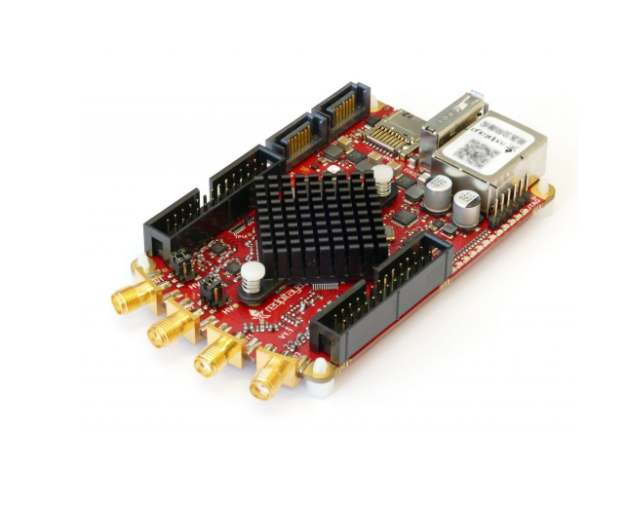Red Pitaya knowledge base
Every engineering student is thinking about finding an affordable and excellent engineering tool that will help them learn as much as possible and become great engineers. Are you one of those students?
Meet Red Pitaya! You can use it in the following subjects:
- Circuits and electronics,
- Measurement in electronic and electrical engineering,
- FPGA / Digital integrated circuit design,
- Digital signal processing,
- Telecommunications,
- Optics and photonics,
- etc.
Young engineers have joined Red Pitaya and made great videos explaining some basic topics that electrical engineers need to understand and be able to apply.

Watch videos and take your knowledge to a higher level
All videos are part of the Smart4All innovation project. Prepared and filmed by Red Pitaya & Zavod 404.
Video #1: Resistors & Kirchhoff's laws
The objective of this video is to brush up on your existing knowledge about Kirchhoff’s laws and expand on that knowledge by showing how they can be applied in resistor circuits. A secondary outcome will be a preliminary understanding of the Red Pitaya STEMlab hardware and software - test & measurements applications.
For this activity, you will need Red Pitaya, two probes, and at least 5 resistors. You can select any resistors (but avoid going below 100 ohms so that nothing accidentally gets fried), and build the circuit in the video. Good luck!
Video #2: Transient response
This activity aims to inform viewers about the transient response on a simple circuit that consists of resistors and either capacitors or inductors.
You will need a Red Pitaya board, multiple probes, and at least one resistor, one capacitor, and one inductor. Build the circuits with us and learn how the RC and LC filters work.
Video #3: Analog filters
After watching this video you will know how to design low and high pass filters, will be familiar with their idealized characteristics, and have a basic understanding of how reality differs from idealizations.
For this activity, you will need Red Pitaya, multiple probes, and at least two resistors and two capacitors.
Video #4: Operational amplifier
In this video, we will cover an amazing component called an operational amplifier. After watching this video you will be familiar with how OpAmps work and what are some behaviors if you connect them in certain ways.
For this activity, you will need Red Pitaya, a potentiometer, or a couple of (different) resistors and multiple probes.
Video #5: Active filters
In previous videos, we’ve learned about OpAmps and filters. Let’s take a look at OpAmp filters (which are actually called active filters). In this course, you will learn why we use OpAmps in analog filters, and how to design them.
For this activity, you will need Red Pitaya, two resistors, two capacitors, and a load.
Here is a challenge for you: try different values of resistors and capacitors. What happened in different scenarios?
Video #6: Superposition
Because we know that you’ve more than likely had enough of all the OpAmps and filters and OpAmp filters and such, we will be taking a break from all those fancy circuits and components, and focusing on the basics. We will take a look at a trick, that can be used with linear circuits with multiple voltages or signal sources, the superposition.
For this activity, you will need Red Pitaya, a couple of probes, and resistors.
We will explore a practical application of superposition in the next course, so stay tuned!

After you join our Academia community we will send you emails about:
- new software features & updates
- news about the latest community projects & events
- new Red Pitaya products & discounts

